I really enjoy using 16mm film and I now have three cameras taking this stock, one 16mm and two 110 of Minolta and Pentax manufacture. My favourite film so far is Rollei’s Superpan 200 which I buy in 120 and strip down to three 16mm lengths. I use Rodinal developer exclusively with a 1:50 dilution which I have found gives me my preferred density, grain and contrast range.
It is a very thin and clear based emulsion which seems to give rise to black haloes around some clear sections of negatives. I digitise files on a copying rig I made and my Sony A3000 and 55mm Micro Nikkor on an adapter and extension tubes which may be the source of the halation. This would possibly not be as pronounced using a scanner.
As I have found with most of the emulsions I have used in 16mm, grain is most noticeable in plain, mid-tone areas with little detail, otherwise it is not very intrusive, as with this emulsion. A fine grain developer might improve things but I quite like the punch that the grain and acuity Rodinal produces gives to an image. Comparing results from this film between 16mm and medium format shows a completely different character to the results along with variations caused by the respective focal lengths used.
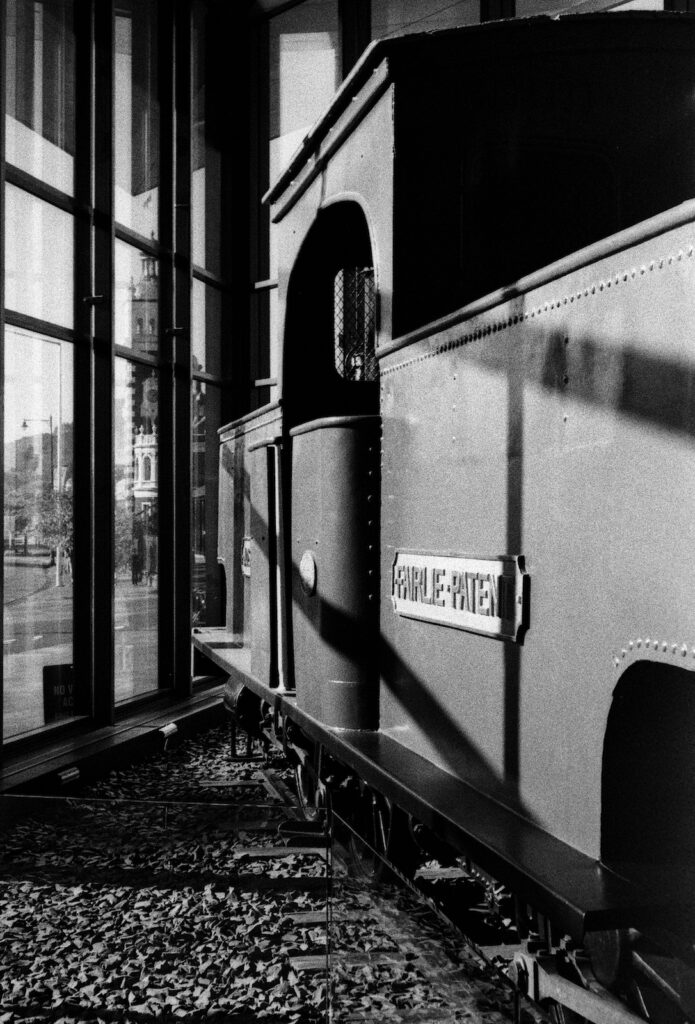
The first frame is taken in Dunedin’s Toitu Early Settlers museum and features “Geraldine”, an unusual double Fairlie steam locomotive once used on New Zealand railways and now preserved as a display. This engine is essentially two locomotives facing opposite ways, the original “push-me-pull-me” perhaps, with a common footplate between them.
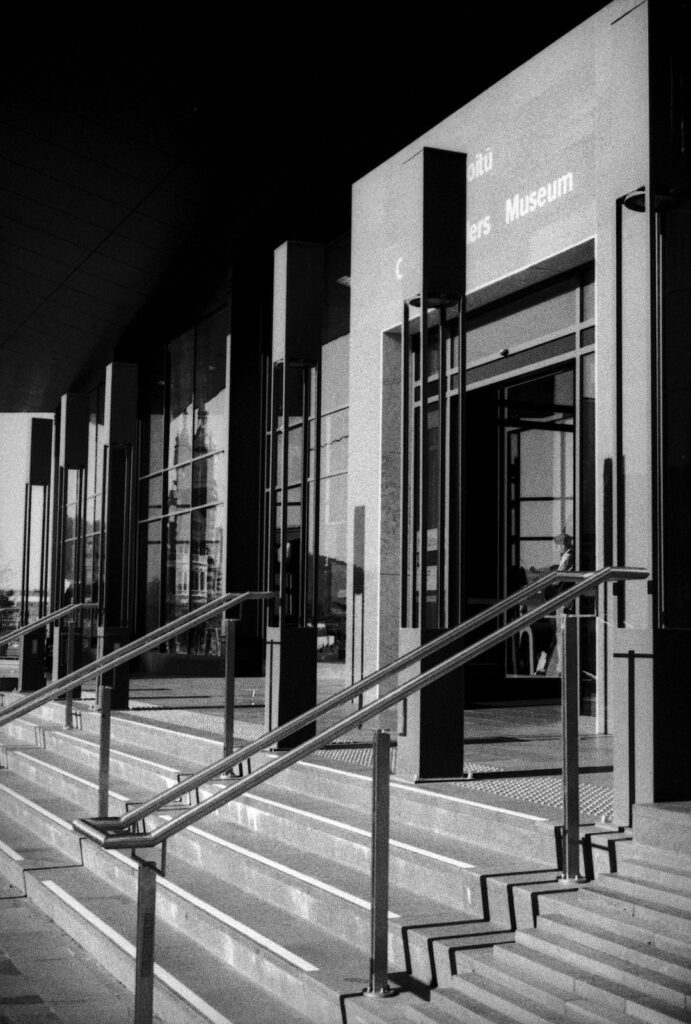
The second frame is of the museum’s entrance in the modern extension.
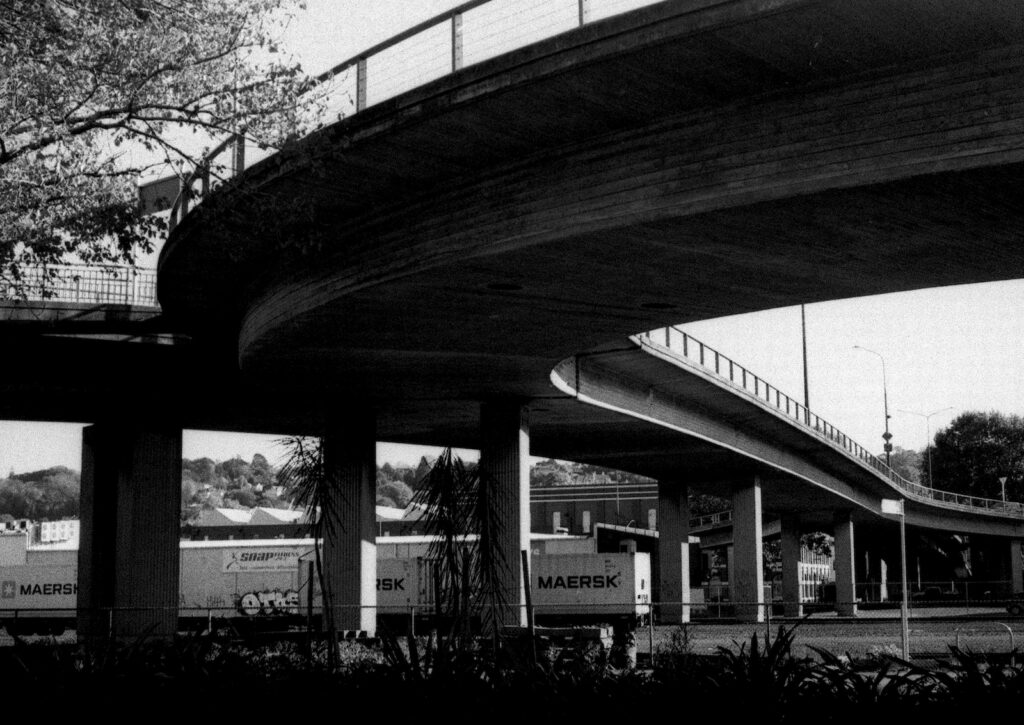
This overpass is part of Dunedin’s central area road network.
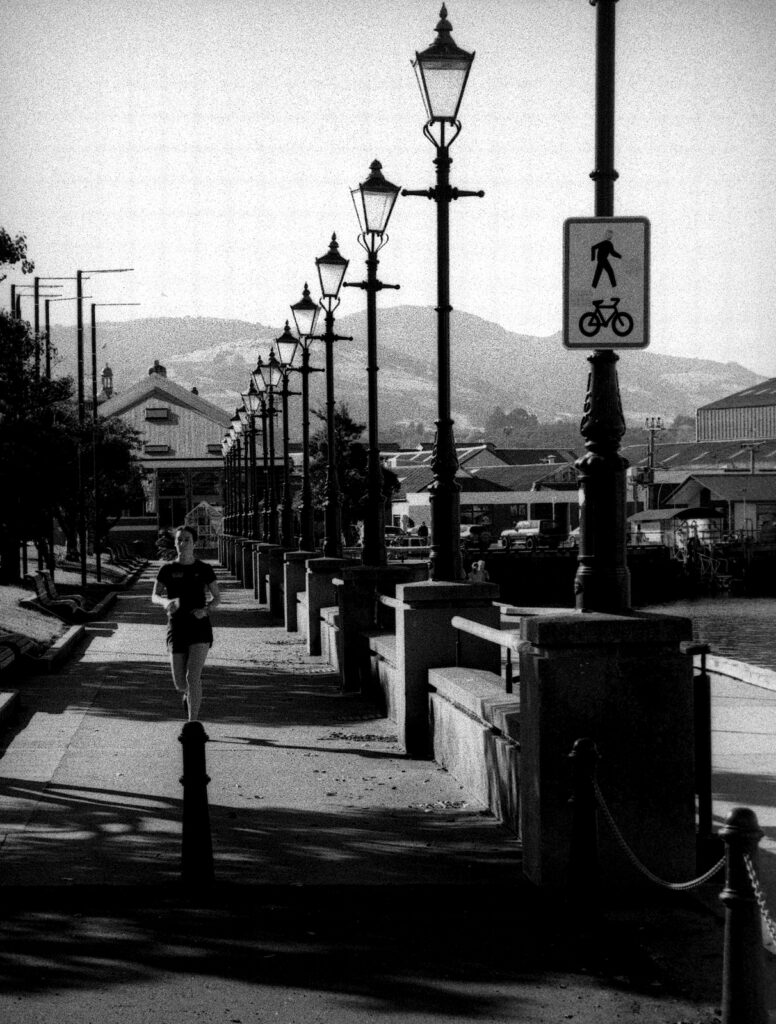
A section of the harbour wall that has been remodelled and used for fishing, walkers and, as here, joggers. The slight halation effect mentioned is visible around the lamp standards.
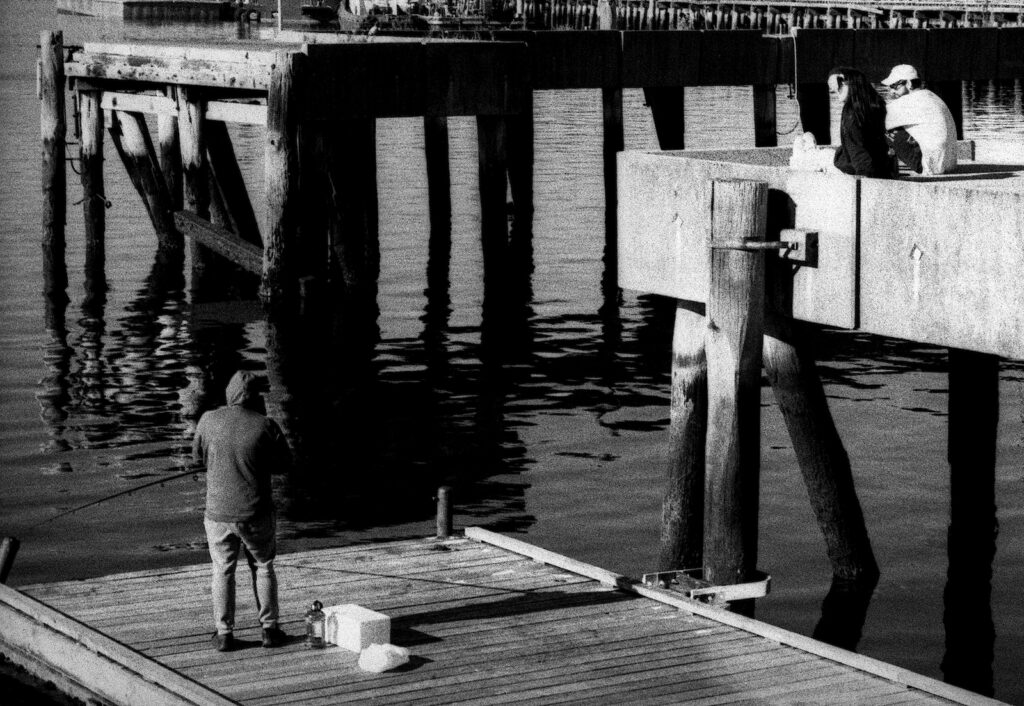
Finally, fishing as a spectator sport? The halation I noted above is vey evident around the heavily shadowed structure of the jetty which is completely clear in the negative.
I have used this film in sub-miniature, 35mm and medium formats and it produces good results in all of them. The differences come from the size of the negatives and the effect that has on detail. So a versatile film that offers various possibilities for interpretation of a subject.
Share this post:









Comments
Gary Smith on 5 Frames with Rollei Superpan 200 and a Minolta 460Tx 110
Comment posted: 04/07/2024
Comment posted: 04/07/2024
John Furlong on 5 Frames with Rollei Superpan 200 and a Minolta 460Tx 110
Comment posted: 04/07/2024
;0)
Comment posted: 04/07/2024
Comment posted: 04/07/2024
Comment posted: 04/07/2024
dakokom866 on 5 Frames with Rollei Superpan 200 and a Minolta 460Tx 110
Comment posted: 04/07/2024
Lance Rowley on 5 Frames with Rollei Superpan 200 and a Minolta 460Tx 110
Comment posted: 06/07/2024
Comment posted: 06/07/2024